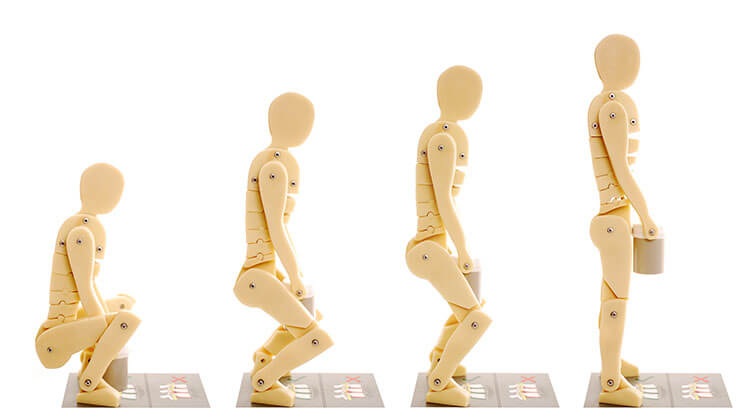
How to Lift Boxes Safely
This article has been constructed using information found on reputable sites including the NHS and ROSPA. Volition Removals accepts no liability for injury caused when moving house on your own. For peace of mind choose an experienced removal company to help with your move.
When moving, many of your home’s larger items, like settees and mattresses, won’t be boxed up. However, smaller items, such as books, CDs, dinnerware and clothes, are placed in boxes for a safe transit. Although this is a sensible approach to moving day, boxes can be tricky to lift. Before you even think about lifting a box to load it, it is advisable to consider what you have put inside. Flimsy cardboard boxes can simply give way on the underside, if overladen, causing the contents to fall out on your feet and damaging them in the process. Use boxes which are designed for the job and be mindful of the weight inside. In addition, wear clothing which allows your body to adopt positions easily and sport sensible shoes that will protect your feet and offer good grip.
According to NHS advice, lifting a box with an improper technique can lead to injuries, specifically back pain. Therefore, it is important to take your time when lifting no matter how much of a rush you may feel you are in. If you put your back out on moving day, then you won’t be of much use, after all.
Prior to lifting
Prior to lifting, you should consider whether one or two people are needed to carry the box in question from A to B. This will come down to the amount of weight to be carried and also the size and shape of the box. Larger boxes and those without handles are harder to lift on your own, so consider working as a team in such cases. In addition, you should plan your route. Remove anything that might be in the way before you carry a box. Take particular care in tricky to pass locations, such as stairs and corridors. When lifting, it is advisable to bend your legs at the knee. This will allow you to get hold of the box from the sides, or from the underside, if you can tilt it a little before lifting. Grabbing a box from the top, with a bent back, is harder on your hands and on your lower back.
Where injuries come from while lifting
Many injuries occur from bending at the back, rather than bending at the knee. When you lift, it can be a good idea to rest the load against a chair half way up, so that you can adjust your body’s position safely before carrying on. Once you are up, it is good advice to maintain the load close to your waist, if possible.
Try to keep the heaviest side of the box closest to your body, with the lightest side furthest from you. When standing, your feet ought to be placed apart from one another with one leg positioned slightly forward.
This will help you to maintain good balance when standing or walking. When moving, keep your head up and be prepared to stop, if you feel your grip loosening.
According to RoSPA, it is better to push loads than pull them and to use transportation aids, like trolleys, wherever possible.
Volition Removals endeavours to provide useful information on moving home the information contained comes from existing research and as such can accept no liability for moving and handling injuries that may occur while moving on your own.



